|
|
Fighting knives used by British commandos and SOE during WW2 |
|
|
|
Titel |
|
Text and pictures by
Olof Janson unless otherwise stated. |
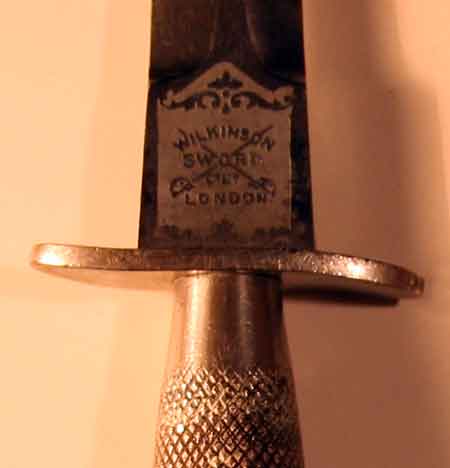
|
Special
honour should be given to:
-
Robert Wilkinson-Latham,
-
Ron Flook,
- Roy Shadbolt.
Who
have given me much assistance.
On the picture to the left:
LeeEnfield SMLE NoI MkIII
F-S 2nd Pattern and 1st
Pattern
Patches are Combined
Operation and No 2 Commando
and Badge of LRDG |
updated
2013-02-13
F-S marks.
|
The
most easily recognized trade mark is of course the Wilkinson Sword knives
with their Wilkinson Sword logo. Wilkinson had monopole of the "F-S
Fighting Knife" mark on their knives.
With regard to
marking on Wilkinson FS knives, there was only the Wilkinson Sword logo and
the FS logo. NO OTHER marks during World War II production. There were NO
inspector's marks or Broad Arrow on Wilkinson FS knives and NO letter or
number.
Apart
from Wilkinson Sword Company it is in most cases very difficult or
impossible to state the manufacturer.
|
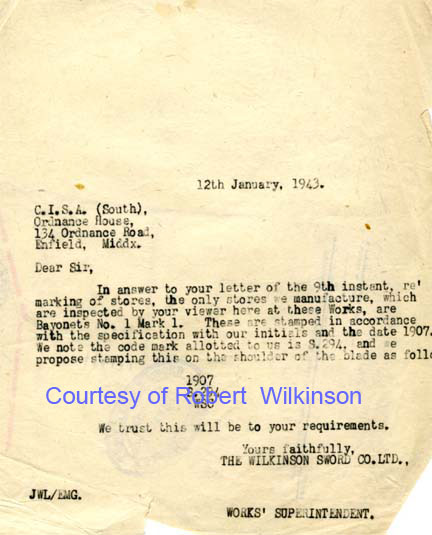 |
There was only the Wilkinson Sword logo and
the FS logo on these knives.
There were NO OTHER marks during World War II production on the
Wilkinson F-S knives.
Knives marked
with the Wilkinson Logotype and F-S etching have NO
inspector's marks or Broad Arrow and NO letter or
number.
For some reason,
the FS knife was not considered a Small Arm and therefore did not come under
the jurisdiction of the CISA (Chief Inspector of Small Arms), Ordnance
House, Enfield.
This is confirmed by
this letter by John (Jack) Wilkinson Latham
at Wilkinson Sword Company in his answer to a circular from CISA dated 9th
Jan 1943.
Courtesy of Robert Wilkinson
Latham
|
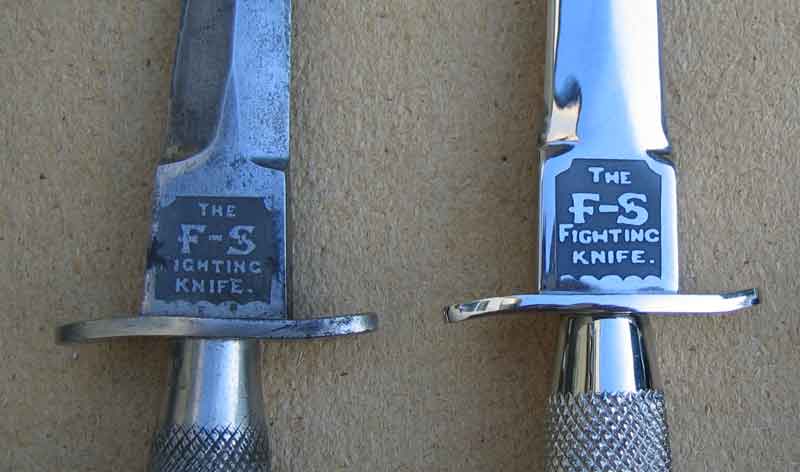 |
|
There
are different types of etching logos with minor differences used. Here are
two different.
The
logos were made by wax pressed on pieces of paper. The paper with the wax
was then pressed onto the ricasso before etching. The wax protected the
steel and left the letters and logo raised.
To the
left a WW2 1st Pattern F-S knife and to the right a 1st
Pattern knife from 1990. |
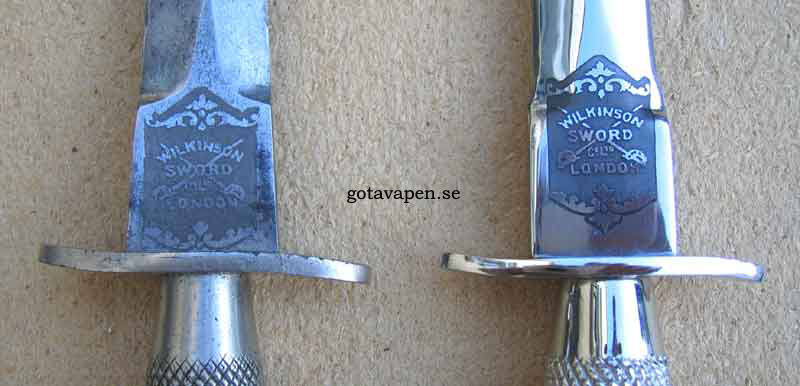 |
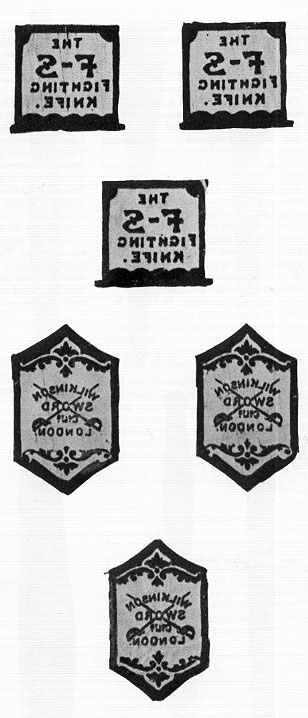 |
Paper used for etching of the
Wilkinson Sword Company F-S knives.
The
normal FS etch on blades was done by women who were usually wives or
daughters of men working at the factory.
Courtesy of Robert Wilkinson
Latham |
Unusual etching
|
|
There
are several variations of the logo type etchings on Wilkinson Sword F-S
knives. It also happened that Sword etch pattern was used. These varied
slightly from etching plate to etching plate depending on the regiments,
blade type etc as they were all hand done and the design as never
‘regulated’ by the Government. Different makers different designs but they
are all similar.
When
names or initials were put on FS blades they were normally put on Finished
knives but sometimes when knives were not available from stock, the FS etch
AND name were done at the same time.
Some of
these women used to work pre war in the razor making department. They
supplied the FS transfers from the Sword department. When a name was put on,
this was done by the Sword department as it was hand lettered usually on a
finished blade or knife. |
|
 |
|
This knife has a very unusual etching as you can see.
Robert Wilkinson Latham told me what most likely happened to this
knife.
In this case all the blade etching was done at the same time and the
Sword department pulled of a transfer from one of the sword blade
plates, cut it down, added the same pattern as a top piece, trimmed
it and painted round carelessly with acid resistant paint before
etching.
This etching of this knife is unlike the normal FS etch, this made
up logo has NO border. It’s just one of those odd things that
happened in wartime by someone not used to etching FS blades. |
|
Here are the different etchings used by Wilkinson
Sword Company 1936-1945 |
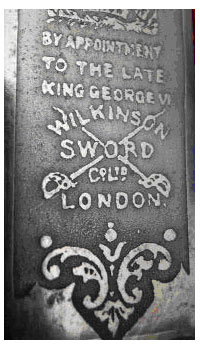 |
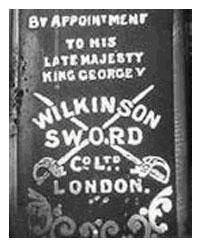 |
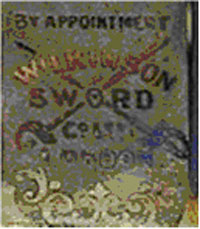 |
|
Sword etch
1936-40 |
Sword etch
1936-40 |
Sword etch
1940-46 |
|
Courtesy of Robert Wilkinson
Latham |
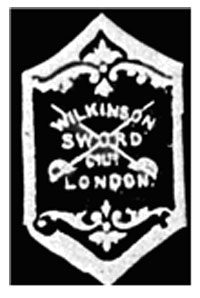 |
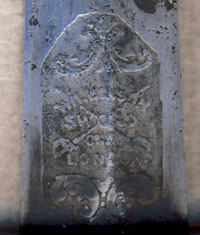 |
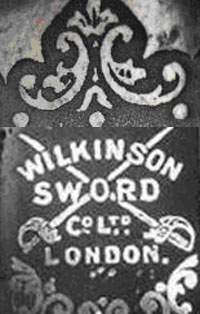 |
|
F-S etch
1940-45 |
unusual etching |
Sword etch Cut
and toped |
| |
Note that
the top three are Sword etches, while the bottom left is the basic type of
etch used on F-S knives.
This etching of this knife is unlike the normal FS etch, this made up logo
has NO border. It’s just one of those odd things that happened in wartime by
someone not used to etching FS blades. |
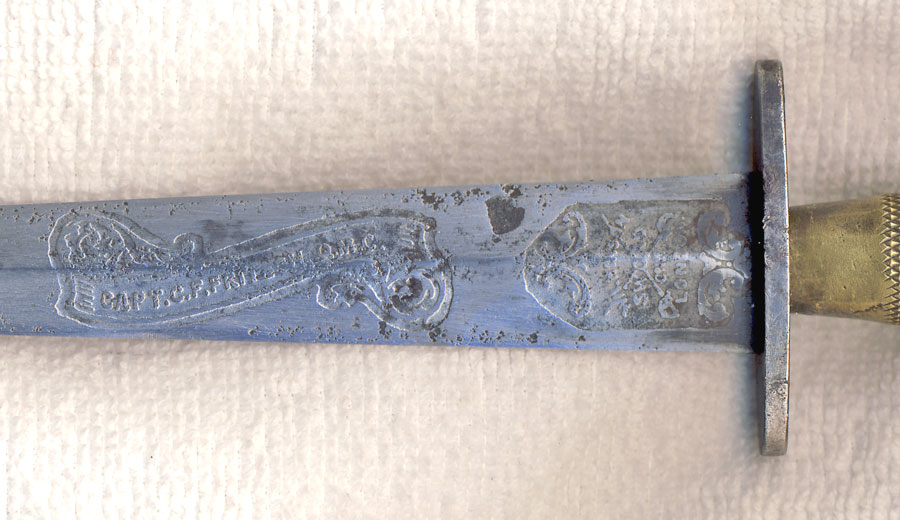 |
|
There
are also knives with etching only on one of the sides. Again it should be
referred to the human factor. These people sat all day long putting on
transfers and sometimes forgot the other side! |
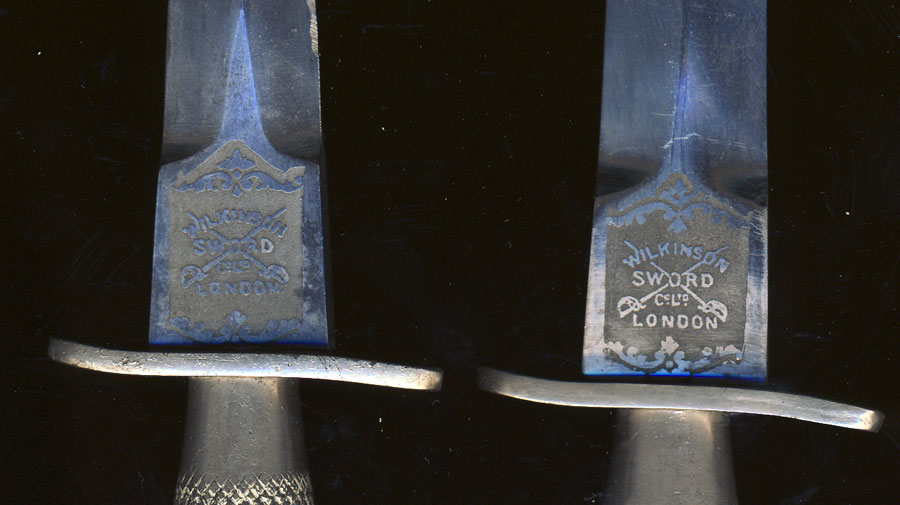 |
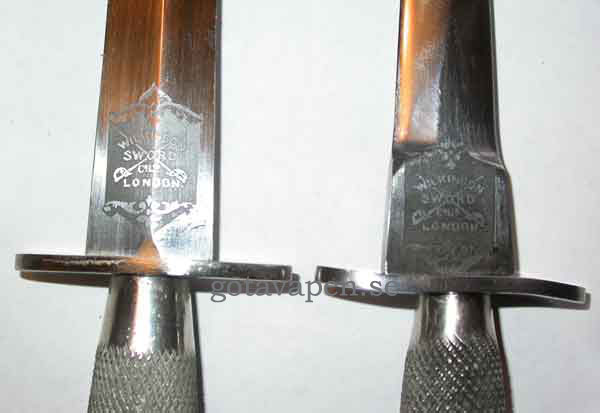 |
Different etchings. |
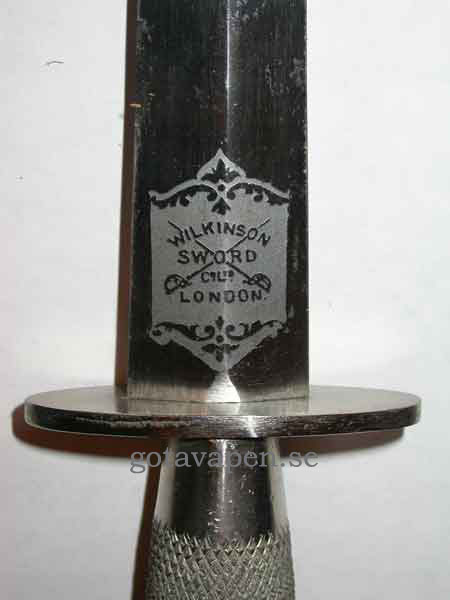 |
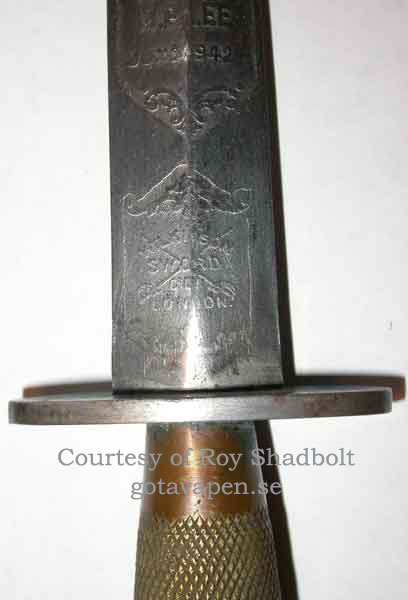 |
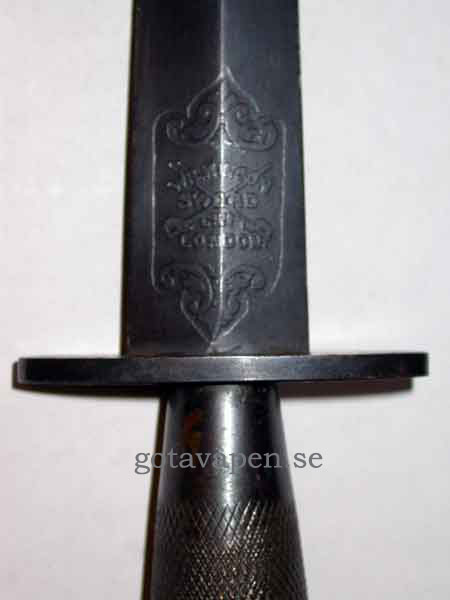 |
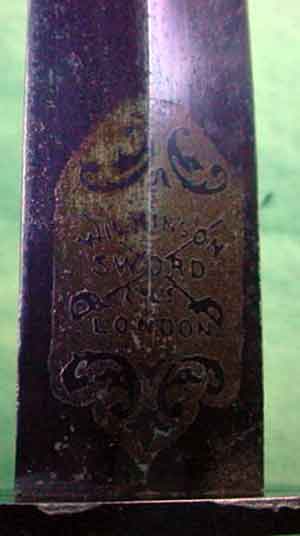 |
 |
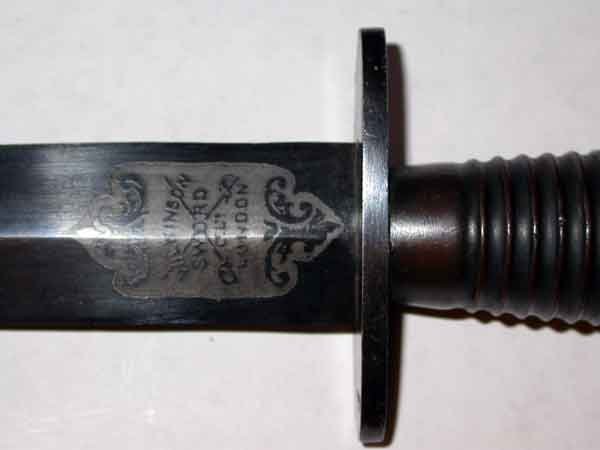 |
 |
After 6th
of February 1943 all Wilkinson knives had Black Finnish and the F-S logo appeared
like this.
Note the pommel. |
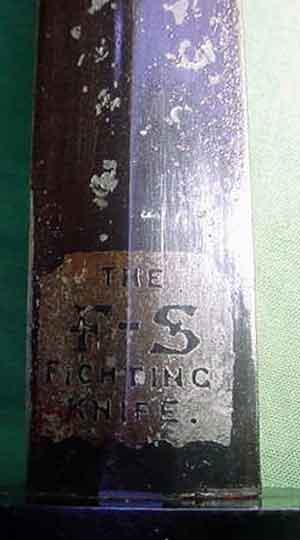 |
 |
F-S logo and Wilkinson logo on a all Black Finnish knife.
|
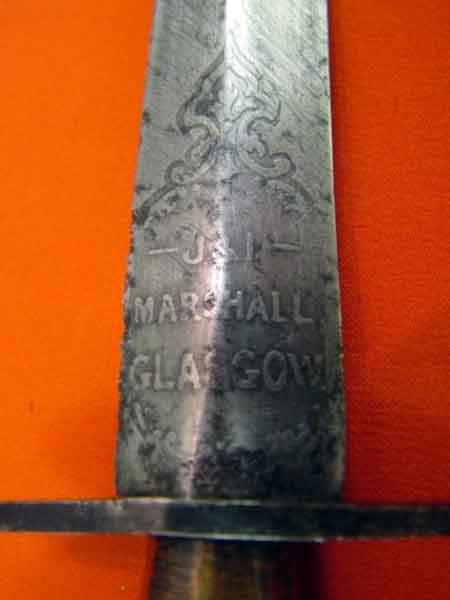 |
This is
an exception – this knife was made by J. & I. Marshall.
According to Ron Flook Marshall’s is along established cutlery retailers
with a long history. They have given him the information that the knife most
likely was made by J. Clark and Sons. Blade length 6.75 inches and LOA 11.5
inches.
|
[Top
of the page]
BROAD ARROW or CROW FOOT mark

|
A very
common mark is the British acceptance mark the Broad arrow
 . This arrow
signifies an item which has been inspected and meets the Government
Standards (MoD).
. This arrow
signifies an item which has been inspected and meets the Government
Standards (MoD).
Normally this arrow is accompanied by a letter or number. This letter or
number signifies the inspector.
The Broad Arrow
is NOT an Inspection Mark but an OWNERSHIP mark denoting Government
Ownership of the item.
It was used in
the early 18th century with the Board of Ordnance (B/|\O) mark and then with
W/|\D as War Department mark of ownership from 1856 when the Board of
ordnance was abolished. The letters each side of W and D were abolished in
1895 (List of Changes 7815).
The broad arrow
on its own is an ownership mark, but when coupled with a number or letter as
found on Commando Knives it is an inspectors/examiners mark.
This is clear
from the letter shown at Plate 101 of Ron Flook’s book British and
Commonwealth Knife book.
These
marks are if they are stamped on the ferrule area of the hilt.
They can also appear on the crossguard.
They
are 1.5 mm, 3.1 mm and in some cases 6.3 mm high.
I must
however emphasize that there are strong evidence against the theory that the
codes represents certain manufacturers.
Ron Flook
shows in his excellent book a letter from MoD (Army) Quality Assurance
Directorate dated the 7th of October 1981 says:
‘It is not
possible to link examination stamps with manufacturers as our examiners
could have visited each of several factories over a period of a few months.’
However it
is reasonable to believe that knives of similar shape and outer appearance
with the same examination stamps come from the same factory.
|
Examples of Broad arrow marks

|
The MoD
examination stamps will also be found on the ferrules or on cross guards.
Each code was unique to an individual and one inspector may have examined
many companies’ arms. There are many numbers like 1, 2, 7, 9, 15, 56, B, V
or B2.
These stamps are normally 1.5 mm, 3.1 mm or 6.3 mm high. The smaller sizes
are normally found on the ferrule area, while the bigger sizes on the cross
guard.
|
|
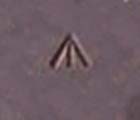 |
A proper broad arrow should look like this. |
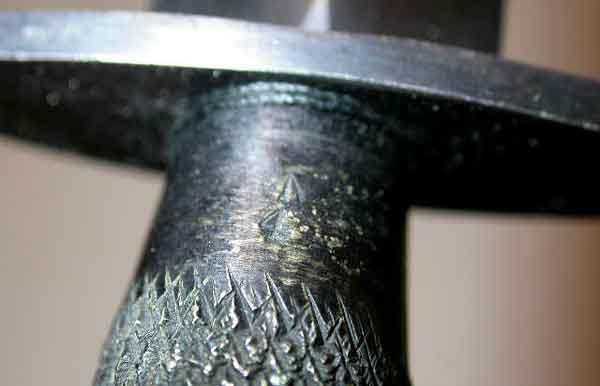 |
Examples of stamps on the ferrule area. Arrow
 over 4 on a Fatman
over 4 on a Fatman
Picture Roy Shadbolt.
|
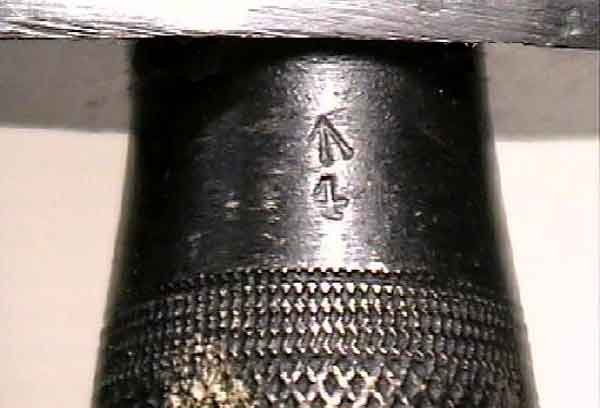 |
Broad Arrow
 over 4 on a reverse knurrled
made by
over 4 on a reverse knurrled
made by
J.
Clarke & SonPicture Roy
Shadbolt. |
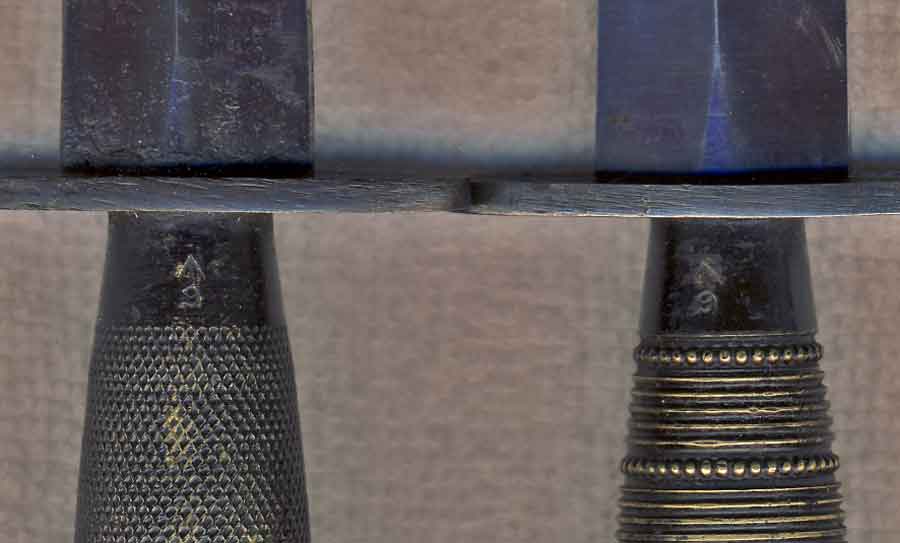 |
|
Two F-S knives both with
Broad Arrow
 over 9
over 9
most likely
made in Sheffield area during WW2
Left reverse knurrled - right Beaded & Ringed |
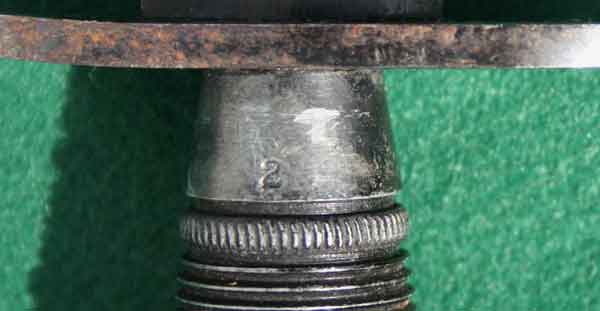 |
Broad arrow
 (hardly seen)
(hardly seen)
over 2 |
|
Example of cross guard stamp
 B2
to the right. B2
to the right.
The punch has tilted here. |
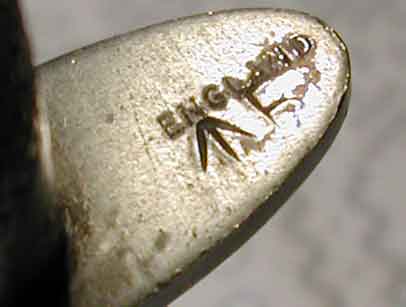 |
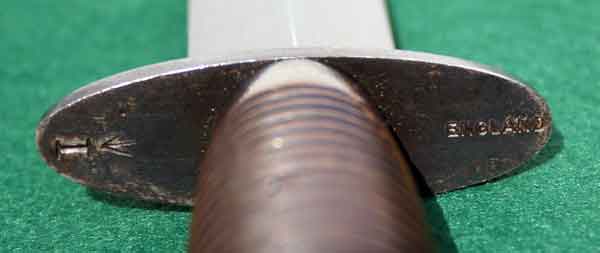 |
 I stamp is
not Ishapor but the acceptance mark of the India Stores Department, who
prewar marked the Broad Arrow and ISD.
I stamp is
not Ishapor but the acceptance mark of the India Stores Department, who
prewar marked the Broad Arrow and ISD.
During the war any stores for India were
marked
 I
I
Some World War 2 vintage F-S knives can be found with a
stamp ENGLAND
on the hand guard.
|
|
The stamp ENGLAND was added to the knives after the end of the war by the
British.
These knives were sold as surplus to USA 1946.
167 000 knives
went as a payment for the
credits of war
over the Atlantic.
If you find an American
Rifleman from 1947 – 1952 you can read advertisements of these knives sold for
$2.95 each! |
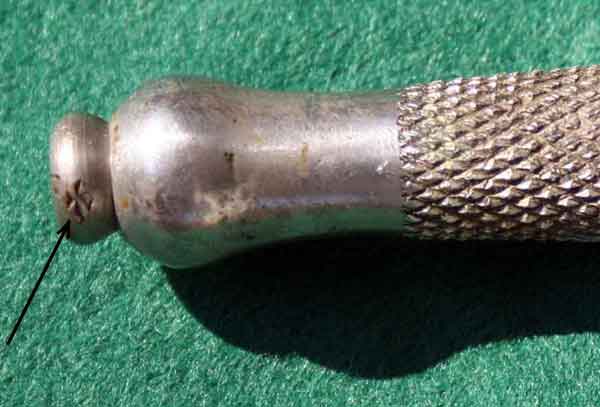 |
The
hilt was secured to the tang with a pommel nut. It was fixed by hand on top
of the tang.
The extra material of tang
was cut outside the nut. Then the nut was put in a vice and the grip was
grasped and tightened. After that the blade was put down in a vice with lead
lining and the tang was hammered out. The indentation from the vice remained
on the nut as seen here on a 2nd Pattern F-S knife. |
Number 1, 2, 3 or 4 on the grips of 3rd Pattern Commando knives.
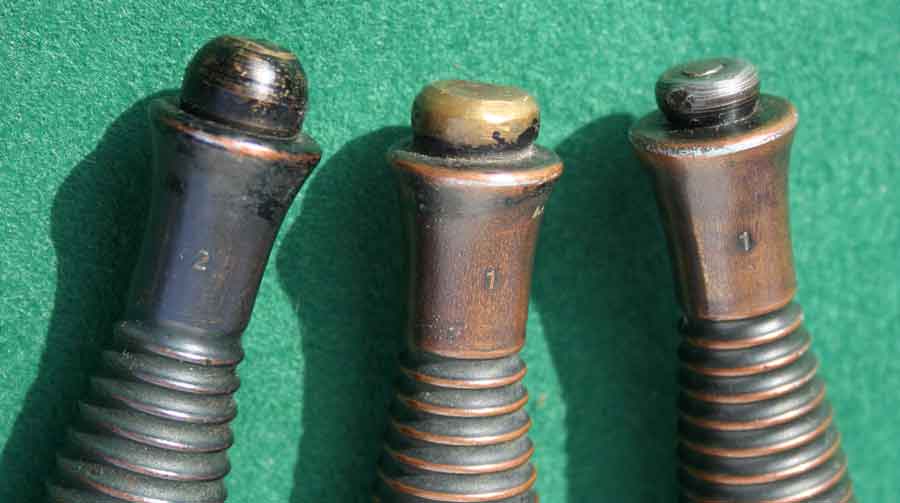 |
|
Note the cast numbers on the hilts and
diffrent pommel nuts.
These numbers refer to one of
four manufacturers. |
On pattern 3 grips which are cast you should find a small number between 1 – 4
cast in the grip.
This number is placed at the other end of the hilt, close to the pommel.
The
grips of Pattern 3 are made by four manufacturers:
-
Perry Barr metal Co of Birmingham
- Walsall Die Cast Ltd
- H. J. Maybrey in New Cross, South London.
- Wolverhampton Die casting Company
Most likely each number 1-4 on the grips refer to one of these four
manufacturers. These grips were used by all other manufacturers of the
Pattern 3 Commando knives.
|
|
|
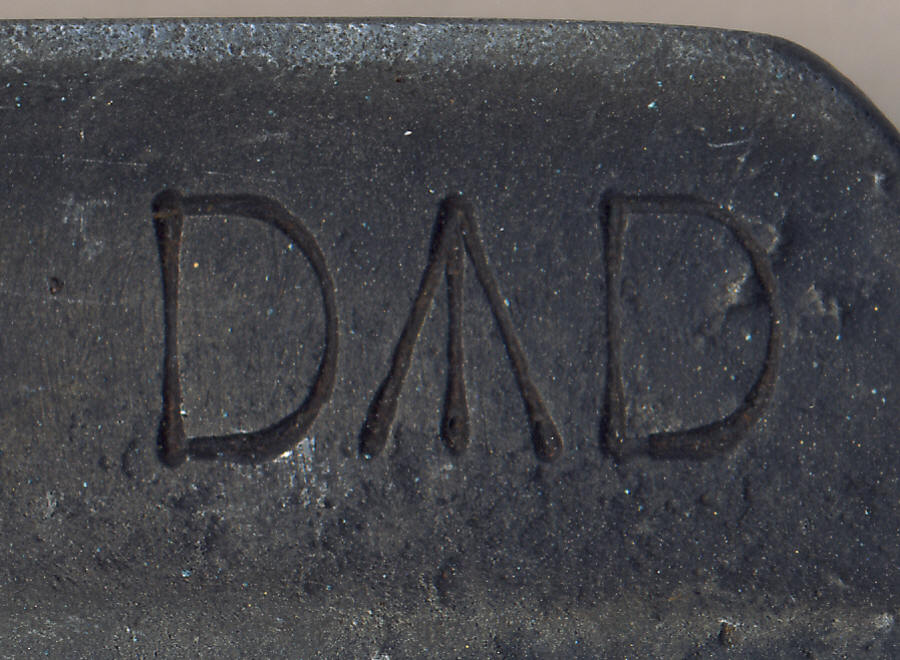 |
|
Australian knives are marked with a broad arrow inside capital letter
D or one D on each side of the arrow. |

|
Knives used by Canadian forces are often marked
with the broad arrow within C
|
[Top
of the page]
[Top
of the page]
References:
|
Robert Wilkinson Latham |
His own web
site |
|
Alan W. Locken |
Commando 1940 - 1945 |
|
Robert A. Burlein |
Allied Military Fightingknives |
|
Ron Flook
|
British and Commonwealth military knives. |
|
Fredrick J. Stephens |
Fighting Knives |
|
Frank Trzaska |
The O.S.S. Stiletto - Knife World February 1998. |
|
Frank Trzaska |
The Raider Stiletto - Knife World July 1997 |
|
Kelly Yeaton |
The First Commando Knives. |
|
John Nowhill & son |
Sheffield |
|
Michigan
knives |
|
|
Dr. William Windrum |
The earliest commando knivesAllan W. Locken – Commando
1940 - 1945. |

|